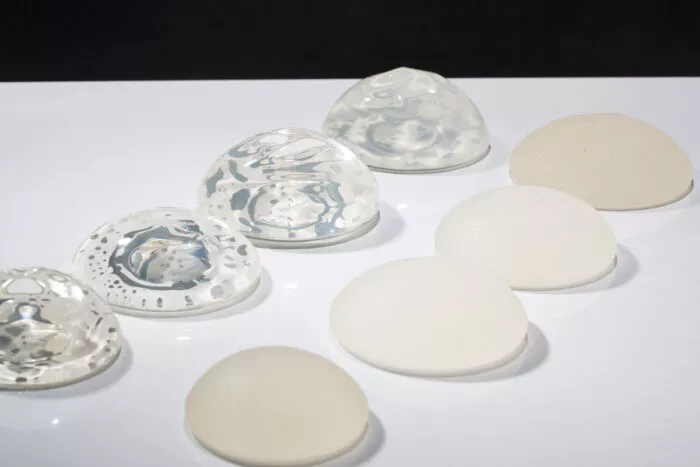Breast augmentation surgery using implants is a popular cosmetic procedure that many women undergo to enhance the size and shape of their breasts. While breast implants are generally safe, there is a potential risk of rupture, which can have various side effects. In this article, we will explore the possible complications associated with a ruptured breast implant.
Understanding Breast Implants
Breast implants are medical devices filled with either saline or silicone gel that are surgically placed beneath the breast tissue or chest muscle. They are designed to improve the appearance of breasts and can be used for cosmetic or reconstructive purposes. However, over time, breast implants may experience wear and tear, leading to a rupture, which occurs when the implant shell develops a hole or tear.
Types of Breast Implant Rupture
There are two types of breast implant rupture:
Silent Rupture: A silent rupture occurs when the implant shell tears without any noticeable symptoms. In the case of silicone gel-filled implants, the gel may remain within the implant pocket or migrate to other areas of the body, such as the lymph nodes.
Symptomatic Rupture: A symptomatic rupture is characterized by visible signs and symptoms. In the case of saline-filled implants, the saline solution leaks rapidly, causing the breast to deflate and become noticeably smaller. This type of rupture is usually easier to detect.
Common Side Effects of Ruptured Breast Implants
When a breast implant ruptures, several side effects may occur. It is important to note that the severity and manifestation of these side effects can vary from person to person. Here are some common side effects associated with ruptured breast implants:
Changes in Breast Appearance
One of the notable side effects of a ruptured breast implant is a change in breast appearance. In the case of saline implants, the affected breast may visibly deflate, causing noticeable asymmetry between the breasts. With silicone gel-filled implants, changes in breast appearance may not be immediately apparent, as the gel can remain within the implant pocket.
Physical Discomfort
Some women may experience physical discomfort or pain following a breast implant rupture. This discomfort can range from mild to severe and may be accompanied by localized inflammation or tenderness around the affected breast.
Breast Hardening
A ruptured breast implant can lead to capsular contracture, which is the formation of excessive scar tissue around the implant. This can cause the breast to feel hardened or firm to the touch. Capsular contracture can also result in changes in breast shape and discomfort.
Lumps or Swelling
In cases where silicone gel migrates outside the implant pocket, lumps or swelling may develop in the breast or nearby lymph nodes. These lumps are typically not cancerous but can cause concern and require medical evaluation.
Changes in Sensation
Some women may experience changes in nipple sensitivity or breast sensation following a ruptured implant. This can manifest as increased sensitivity, decreased sensation, or altered tactile perception in the breast area.
Psychological Impact
Dealing with a ruptured breast implant can have psychological consequences for some women. The emotional distress, body image concerns, and anxiety associated with the rupture and subsequent corrective procedures can significantly impact a person’s well-being and self-esteem.
Diagnosis and Treatment
If you suspect that your breast implant has ruptured, it is crucial to seek medical attention promptly. Your healthcare provider will likely perform a physical examination and may recommend additional imaging tests, such as an ultrasound or MRI, to confirm the diagnosis of a ruptured implant.
The treatment options for a ruptured breast implant depend on several factors, including the type of implant, the extent of the rupture, and the presence of symptoms. In many cases, surgical intervention is necessary to remove and replace the ruptured implant. During the surgery, the surgeon will also address any associated complications, such as capsular contracture or silicone migration.
Prevention and Long-Term Monitoring
While it may not be possible to prevent all instances of breast implant rupture, there are steps you can take to minimize the risk:
Regular Monitoring: It is essential to have routine follow-up appointments with your plastic surgeon to assess the condition of your breast implants. This will allow for early detection of any signs of rupture or other complications.
MRI Screening: For silicone gel-filled implants, periodic MRI screenings are recommended to evaluate the integrity of the implants. MRI imaging can detect silent ruptures that may not present with visible symptoms.
Choosing Qualified Surgeons and FDA-Approved Implants: Selecting a board-certified plastic surgeon with experience in breast augmentation procedures is crucial. Additionally, choose implants that are FDA-approved and have a proven safety record.
Avoiding Excessive Pressure or Trauma: Protect your breasts from excessive pressure or trauma that could potentially damage the implants. This includes avoiding activities or sports that involve significant impact to the chest area.
Self-Examination: Perform regular self-examinations of your breasts to check for any changes, such as swelling, lumps, or changes in shape. If you notice any abnormalities or suspect a rupture, consult with your healthcare provider promptly.
Educate Yourself: Take the time to educate yourself about the potential risks and complications associated with breast implants. Understanding the signs and symptoms of a ruptured implant can help you seek early medical attention if necessary.
Conclusion
While breast augmentation surgery using implants is generally safe, there is a risk of rupture that can lead to various side effects. It is important for individuals with breast implants to be aware of the signs and symptoms of a ruptured implant and seek medical attention promptly if they suspect a problem. Regular monitoring, choosing qualified surgeons and FDA-approved implants, and practicing preventive measures can help minimize the risk of rupture and associated complications. By taking proactive steps and staying informed, individuals can make informed decisions about their breast health and maintain the desired results of their breast augmentation surgery. Remember, early detection and appropriate treatment are key in managing a ruptured breast implant effectively.


